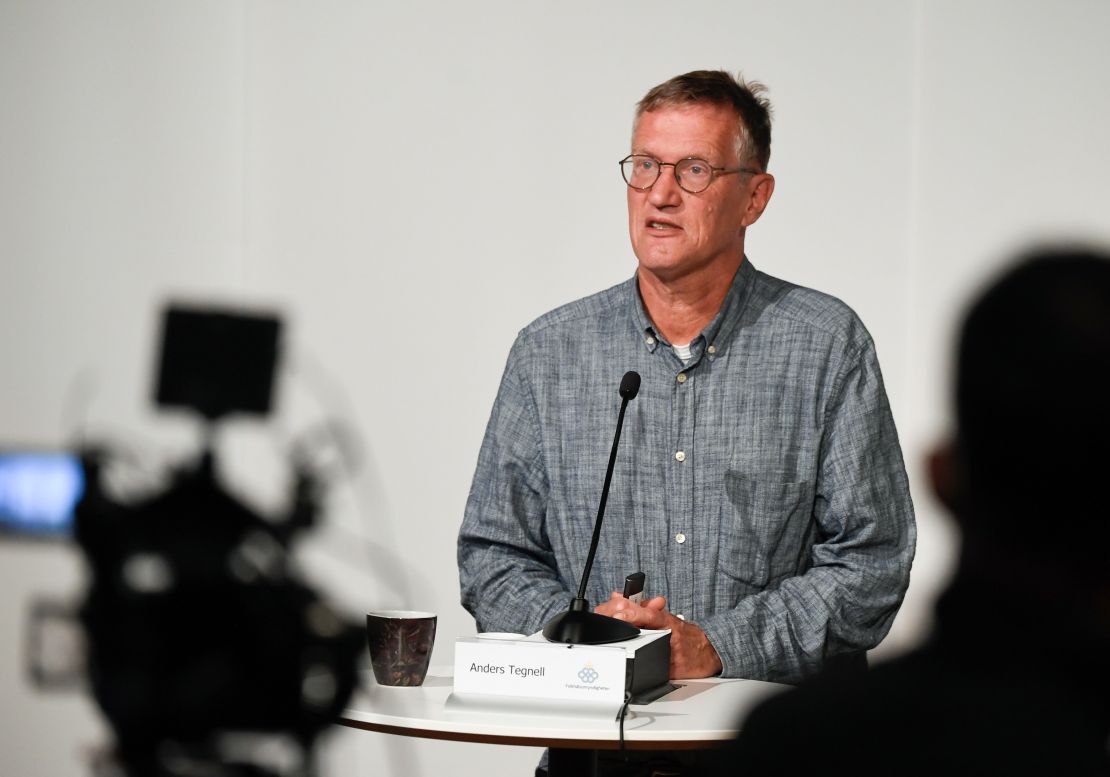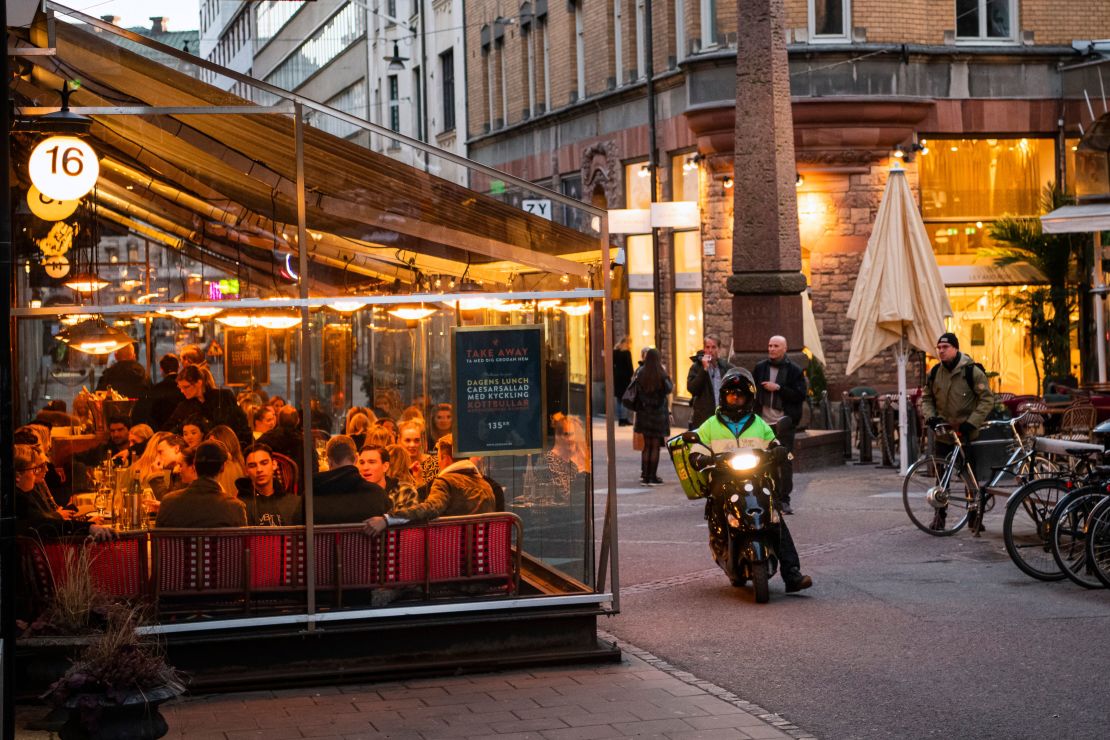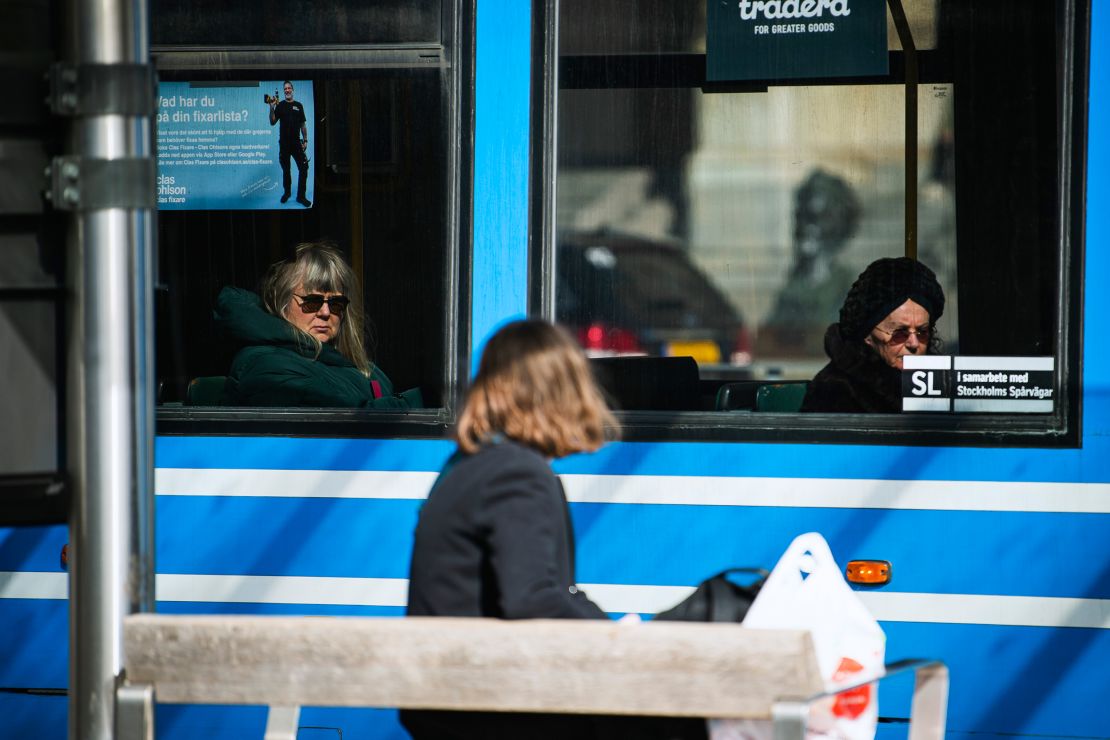An expert on the spread of Covid-19 proclaimed last week that the pandemic in Sweden was essentially over — the virus there was “running out of steam,” he said, as researchers suggest Swedes could be building immunity.
Such comments have emboldened governments flirting with the idea of adopting Sweden’s “light-touch” approach, in the hope they can soften the blow to their economies.
There was reason for optimism when Kim Sneppen, from the Niels Bohr Institute in Copenhagen, made his comments. Sweden’s infection and death rates had been low for weeks, despite a second wave rolling over Europe. It seemed to mark a turnaround for the country, which experienced one of the highest death tolls in the world per capita during the spring.
The problem is, the science isn’t in on whether immunity is building in Sweden at all, after the country resisted lockdowns and let the virus spread through much of its population.
UK Prime Minister Boris Johnson, nonetheless, announced changes to restrictions in England last week, shaping the country’s Covid-19 response in the image of Sweden’s. Experts in both the UK and Sweden are warning that doing so could be dangerous.
The UK has been experiencing record high numbers in daily infections, yet Johnson tightened restrictions only slightly, placing more emphasis on personal responsibility to prevent viral transmission, as Swedish authorities have done. The most significant change to the rules is a 10 p.m. curfew for pubs, bars and restaurants, forcing them to close just an hour earlier than they typically did. Now only table service is allowed, to avoid people lining up at bars to order food and drinks, as is the case in Sweden.
As most of the Western world went into lockdown over the spring, Sweden’s response was an outlier. It only issued advice to its citizens to practice social distancing and personal hygiene. Sweden typically doesn’t mix public health and politics, and it doesn’t typically use the law to influence behavior to protect people’s health. So it kept open its bars and restaurants, as well as schools for under-16s, as other countries had them shuttered.
But even Swedish officials admit that their strategy failed to protect care homes, where nearly half of the country’s deaths were confirmed. More than 5,800 people have died from Covid-19 so far in Sweden, a country of around 10 million people.

While UK Foreign Secretary Dominic Raab has insisted that likening the UK’s new measures to Sweden’s is a mischaracterization, a Downing Street spokesperson confirmed to CNN that the Prime Minister took advice from the architect of Sweden’s response, Anders Tegnell, just two days before he announced his Swedish-style changes.
“The Prime Minister canvassed a wide variety of scientific opinions over the weekend and on Sunday he took evidence from a number of scientists, which he used to formulate the package of measures he introduced,” the spokesperson said. “It was an opportunity for people to give advice freely.”
Herd immunity debate resurfaces
It’s too soon to declare victory in Sweden, and even officials in the country are making clear they are not out of the woods.
After a deadly spring and summer, the situation in Sweden appeared under control — its infection rate is around 38 cases for every 100,000 people, EU data shows. In the UK, it’s around 87 and in Spain it’s 320.
But there has been an uptick in Sweden in the past week, and Tegnell himself has conceded that authorities may now need to implement tighter restrictions at the local level and recommend mask-wearing in public areas, like shops, for the first time since the virus arrived – something he has spoken out against doing for months. On Thursday last week, Swedish Prime Minister Stefan L?fven described the increase in cases as “worrying.”
Sweden’s Public Health Agency denied the country was backpedaling in its approach, saying in an email to CNN that it had always been prepared to advise the use of masks and impose restrictions in certain situations.
But the recent interest in Sweden has marked a return to the debate on “herd immunity,” the idea that if a certain percentage of your population is immune to a virus, the virus cannot transmit easily and will eventually die out. Scientists say that many viruses can be combated this way when 60-70% of a population is immune but that is usually achieved with a vaccine.
A White House coronavirus taskforce member, Dr. Scott Atlas, has denied reports that he advocated adopting Sweden’s model in the US or that he was a proponent of the “herd immunity” approach. But a senior administration official told CNN that all the policies Atlas had pushed for were in the vein of a herd immunity strategy.
But research shows that even in hard-hit cities, like Stockholm, only around 15% of people tested positive to Covid-19 antibodies. In the US, less than 10% of people have tested positive, well short of herd immunity. How much protection those antibodies give and for how long are also unknowns.
During the pandemic, much of the talk about immunity has focused on antibodies, but researchers are also looking at T cells, which can fight a virus after infection and play a role in immunity, as well.
One peer-reviewed study by researchers from Sweden’s Karolinksa Institutet showed a higher than expected level of T-cell reaction in the blood samples of healthy people. They tested people with either mild or asymptomatic Covid-19, as well as healthy blood donors, as a control group.

What was surprising was that T-cell reactions were seen in 30% of healthy blood donors who had no known history of Covid-19 infections. That’s twice the rate of people who tested positive for Covid-19 antibodies in Stockholm. Researchers hope that these results mean there is much more immunity in the population that previously thought.
Immunologist Cecilia S?derberg-Nauclér, who is also from the Karolinska Institutet but did not work on the study, warned that there was no clear evidence yet that what was happening in test tubes was actually playing out in real life. In other words, no one knows for sure that having T cell reactions to the virus in your blood actually means they will help a person infected with the novel coronavirus.
She also explained that even if the T cells did fight the virus, governments shouldn’t allow Covid-19 to simply rip through the public in an attempt to build herd immunity. There are two reasons for that: It’s not clear that past Covid-19 infections are even the reason T cells are reacting to the virus in test tubes. She pointed to another study that showed T cell reactions in 40 to 60% of samples from blood donors from 2018, long before the virus was presumably transmitted to humans for the first time.
That suggests that something else — perhaps past infections of similar viruses — were causing this reaction, and possibly some immunity.
“There are indications that there is something that has been present in the population before this virus came along, and the question is, does it help us?” she told CNN.
She explained that T cells were like “trained soldiers” that have come across a threat before and are “recalled” when it faces the same or similar threat again.
“That’s what’s happening in test tubes — you recall the response and then react against SARS-Cov2, but if they have been trained to do that before the virus existed, they must have been trained by something else. That is why the argument is that there is most likely we have a ‘cross immunity.’ However, does that protect us? We have no idea.”
The second problem with letting the virus loose in populations is that, even if you protect the vulnerable, there could be long-term health consequences, S?derberg-Nauclér said.
“We know at least 10% of people are getting ill long-term, and five to six months after being infected, they still can’t get out of bed. They can’t function at work, they don’t function in school,” S?derberg-Nauclér said.
The X factor
Until there is concrete evidence that immunity is truly building in Sweden, it’s impossible to know what’s behind its lower infection rates.
There are societal factors that could be having an effect.
More than 50% of Swedes live alone, for example, more than any other country in Europe. That could be significant, as several studies have shown that a high proportion of infections is spread between people within their homes.
Sweden’s cities are less dense than many in the UK and US, for example, yet there is no consensus on what role density plays in the spread of Covid-19.
In Sweden, if you have even mild Covid symptoms, you are advised to self-isolate for a week. Whether you are a banker, teacher or bus driver, Sweden’s strong social safety net means a person is paid either their full wages by their employer, or benefits by the state during this period.

Imposing Sweden’s model on the UK, with its different systems and cultural practices is risky, experts warned Friday.
“We can see no merit in Sweden being held up as an example for us,” said Dr. Gabriel Scully, part of Independent SAGE, a group of experts who have banded together to offer the public alternative advice to the government’s official advisory body, known as SAGE. He called Sweden’s approach “ineffective” and pointed out that the country’s Nordic neighbors, like Finland and Norway, had more successful responses, with far fewer deaths.
In a briefing, the group argued that the UK could be more vulnerable to the virus than Sweden if restrictions were kept loose. There are generally higher financial pressures in the UK. Residents spend more of their income on housing and unemployment benefits are lower, for example, which may influence people’s risk-taking behavior.
Air pollution, which studies show can be linked with the severity of infections, is much higher in the UK, the briefing notes. And as concerns are raised over outbreaks at schools, class sizes could be a factor, if social distancing is needed. The average class size in public primary schools in the UK is 27, while in Sweden, it’s 20.
And as Swedes are generally trusting of authorities, people there largely followed government guidelines and social behavior has changed voluntarily.
According to Swedish government data, more than 80% of Swedes have been social distancing, are avoiding shaking hands and are washing their hands more often and thoroughly. Sixty percent of people have reduced their activities outside the home and are avoiding crowded places.
Professor John Edmunds, who advises the government in its Covid response, said on Sky News that the measures Johnson announced last week were as dangerous as a “lorry speeding down a hill.” But he told CNN that there were still some valuable lessons to take from Sweden.
“There is much to learn from Sweden, from the benefits of adopting a consistent long-term strategy with allied stable messaging, to offering support to help people to do the right thing,” he said.
This story has been updated to clarify and add context on Sweden’s response to criticisms of its strategy. While it has defended its overall approach, it has admitted failures to protect the elderly.




















